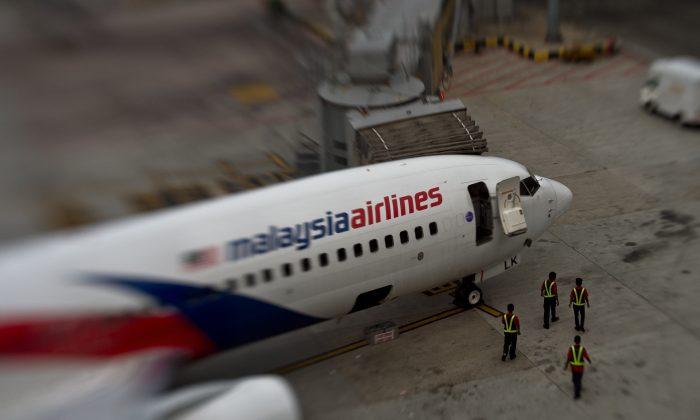A New Zealand woman who lost her husband on Malaysia Airlines Flight 370, which disappeared in March, rejected compensation offers from the company.
Danica Weeks, the widow of Flight 370 passenger Paul Weeks, told the NZ Herald that she received a compensation offer of $64,000 from the airline.
However, she said the money was offered on the condition that she complete a questionnaire. But she got legal advice and rejected the offer.
Voice370, a group that was helped set up by Weeks, slammed the company’s offer.
“We are left asking ‘is any life worth so little?’” the group stated. “No sum of money, no matter how great, can compensate the families for our losses. No amount of money can ever take the pain away. True justice cannot be measured by money.”
It added: “Malaysia Airlines cannot undo this tragedy. However, a fair and adequate compensation for all would reflect the magnitude of the effect this tragedy has had on our lives and should be commensurate to this being the worst air tragedy the industry has ever seen.”
Weeks, who now lives in Perth, described the offer as a “catch-22.”
“It’s like doing something nice, but you do something for us by filling in this questionnaire and give us all your details, which I can only surmise will go to their insurance company, so the insurance company knows what they’re up for,” she told Perth Now, via Stuff.co.nz.
And Voice370 said the most important thing that can be done is finding missing plane, which disappeared on March 8 with 239 people on board. It is believed to have crashed somewhere in a remote part of the Indian Ocean.
A few months ago, Weeks described in an interview the difficulty raising two children without a father.
“I am stuck on March 8,” she told the Australian. “My life stopped that day. I saw him walk out that gate at Perth airport. Lincoln screamed, ‘I love you’ and Paul had a smile from ear to ear. Then he was gone. I can’t move on from that.” Then she corrects herself. “Actually, I’m stuck on March 7. When we were still together, still a family unit.”

Meanwhile, the search for the missing plane resumed last week.
The GO Phoenix, the first of three ships that will spend up to a year hunting for the wreckage far off Australia’s west coast, is expected to spend 12 days hunting for the jet before heading to shore to refuel.
Crews will use sonar, video cameras and jet fuel sensors to scour the seabed for the Boeing 777, which vanished for reasons unknown on March 8 during a flight from Kuala Lumpur to Beijing with 239 people on board.
The search has been on hold for four months so crews could map the seabed in the search zone, about 1,800 kilometers (1,100 miles) west of Australia. The 60,000-square kilometer (23,000-square mile) search site lies along what is known as the “seventh arc” — a stretch of ocean where investigators believe the aircraft ran out of fuel and crashed. Officials analyzed transmissions between the plane and a satellite to estimate where it entered the water.
Two other ships being provided by Dutch contractor Fugro are expected to join the Malaysian-contracted GO Phoenix later this month.
The ships will be dragging sonar devices called towfish through the water about 100 meters (330 feet) above the seabed to hunt for the wreckage. The towfish are also equipped with sensors that can detect the presence of jet fuel, and are expected to be able to cope with the dizzying depths of the search zone, which is 6.5 kilometers (4 miles) deep in places.
If anything of interest is spotted on the sonar, crews will attach a video camera to the towfish to film the seabed.
Australian Transport Safety Bureau Chief Commissioner Martin Dolan, whose agency is leading the search, has expressed cautious optimism that the plane will eventually be found.
“We’re confident in the analysis and we’re confident that the aircraft is close to the seventh arc,” he said.
The Associated Press contributed to this report.






Friends Read Free